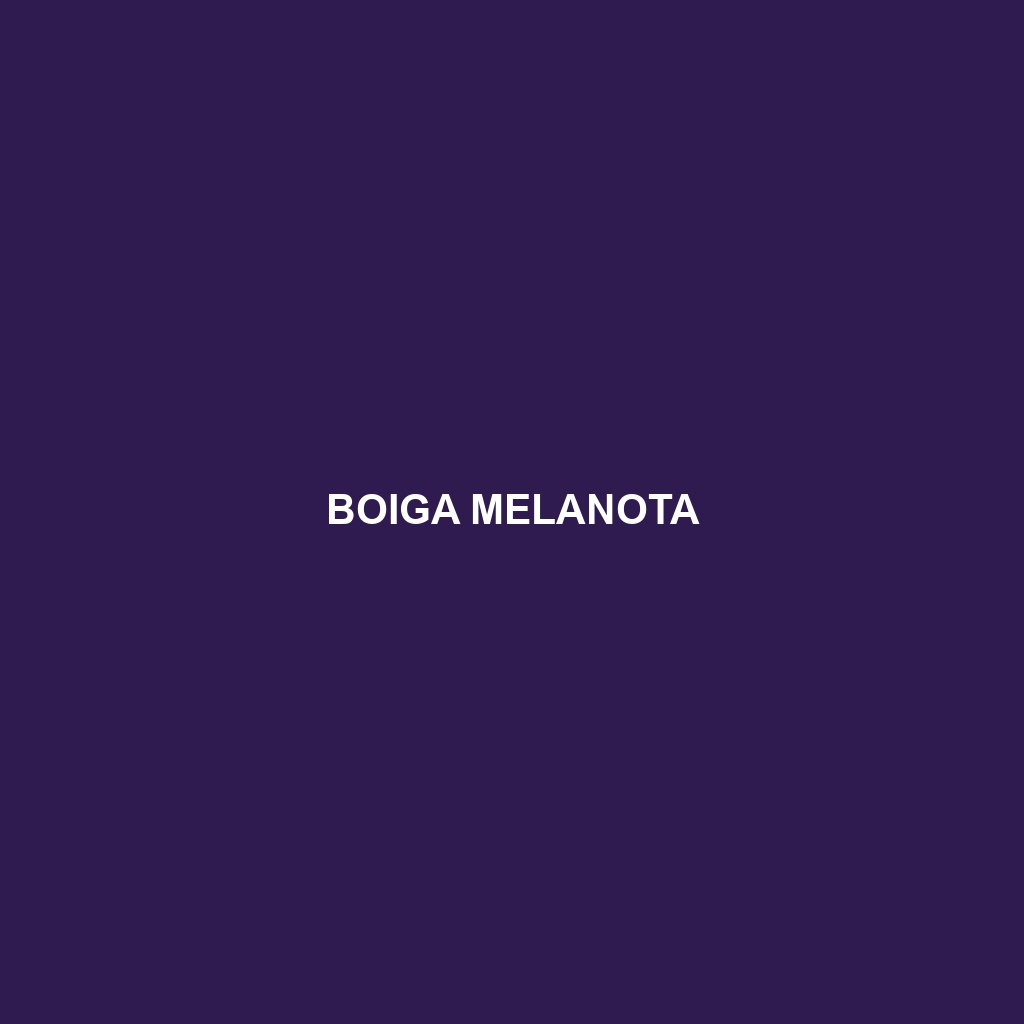Species Description: Boiga melanota
Common Name: Boiga melanota
Scientific Name: Boiga melanota
Habitat
Boiga melanota, commonly known as the black-headed cat snake, is primarily found in various tropical and subtropical environments. This species inhabits regions across Southeast Asia, notably in countries such as Thailand, Malaysia, and Indonesia. These snakes are typically associated with moist forest habitats, including primary and secondary rainforests, where they can be found in trees and shrubs, showcasing their arboreal nature.
Physical Characteristics
This species exhibits a remarkable appearance, with adults reaching an average length of 1.5 to 2 meters. The body is slender and long, showcasing a striking coloration that can vary. The most distinguishing feature is its vividly marked black head, which contrasts with the pale yellow to light brown body. Some individuals display intricate patterns that may include dark bands or spots, enhancing their camouflage against predators.
Behavior
Boiga melanota is primarily nocturnal, engaging in hunting and foraging activities during the night. They are known for their agility and swift movements, often seen gliding through trees in search of prey. These snakes exhibit a unique defensive behavior—when threatened, they may adopt a coiled posture, displaying their striking coloration as a warning to potential predators.
Diet
This species primarily feeds on a diet of reptiles, including small lizards and other snakes, making it a significant predator within its habitat. Boiga melanota is also known to consume amphibians and small mammals, demonstrating its adaptability in dietary preferences. Their feeding habits are crucial for maintaining the balance within various ecosystems.
Reproduction
Boiga melanota engages in reproduction typically during the warmer months, with breeding occurring in late spring to early summer. Females lay clutches of 7 to 18 eggs, which are deposited in concealed, safe locations to protect the offspring. The incubation period lasts approximately 60 to 90 days before hatchlings emerge, measuring around 30 centimeters in length.
Conservation Status
The conservation status of Boiga melanota is currently classified as Least Concern by the International Union for Conservation of Nature (IUCN). However, habitat loss due to deforestation and land conversion poses a potential threat to local populations. Continued monitoring is essential to ensure their long-term survival.
Interesting Facts
One fascinating fact about Boiga melanota is its ability to adapt to different habitats, making it a resilient species. Additionally, these snakes are known to exhibit a remarkable behavior known as ‘ballooning,’ where they glide between branches to patchily distributed prey, an ability not commonly found in many snake species.
Role in Ecosystem
Boiga melanota plays a vital role in its ecosystem as both a predator and prey. By controlling the populations of small reptiles and amphibians, it helps maintain ecological balance. Furthermore, these snakes serve as a food source for larger predators, emphasizing their importance in the food web of tropical ecosystems.
